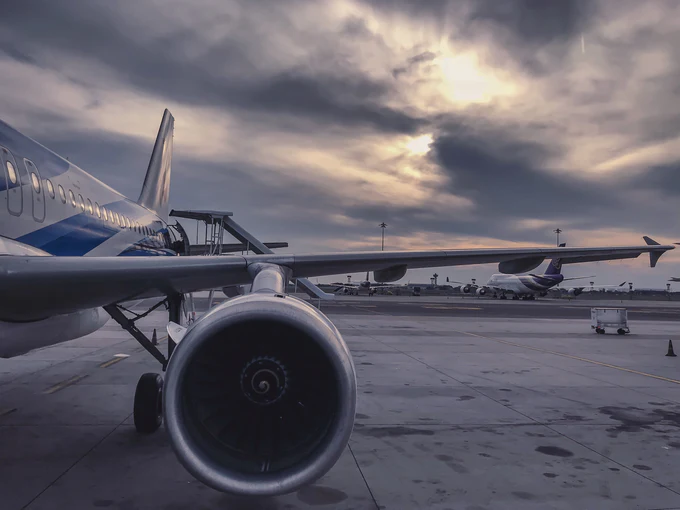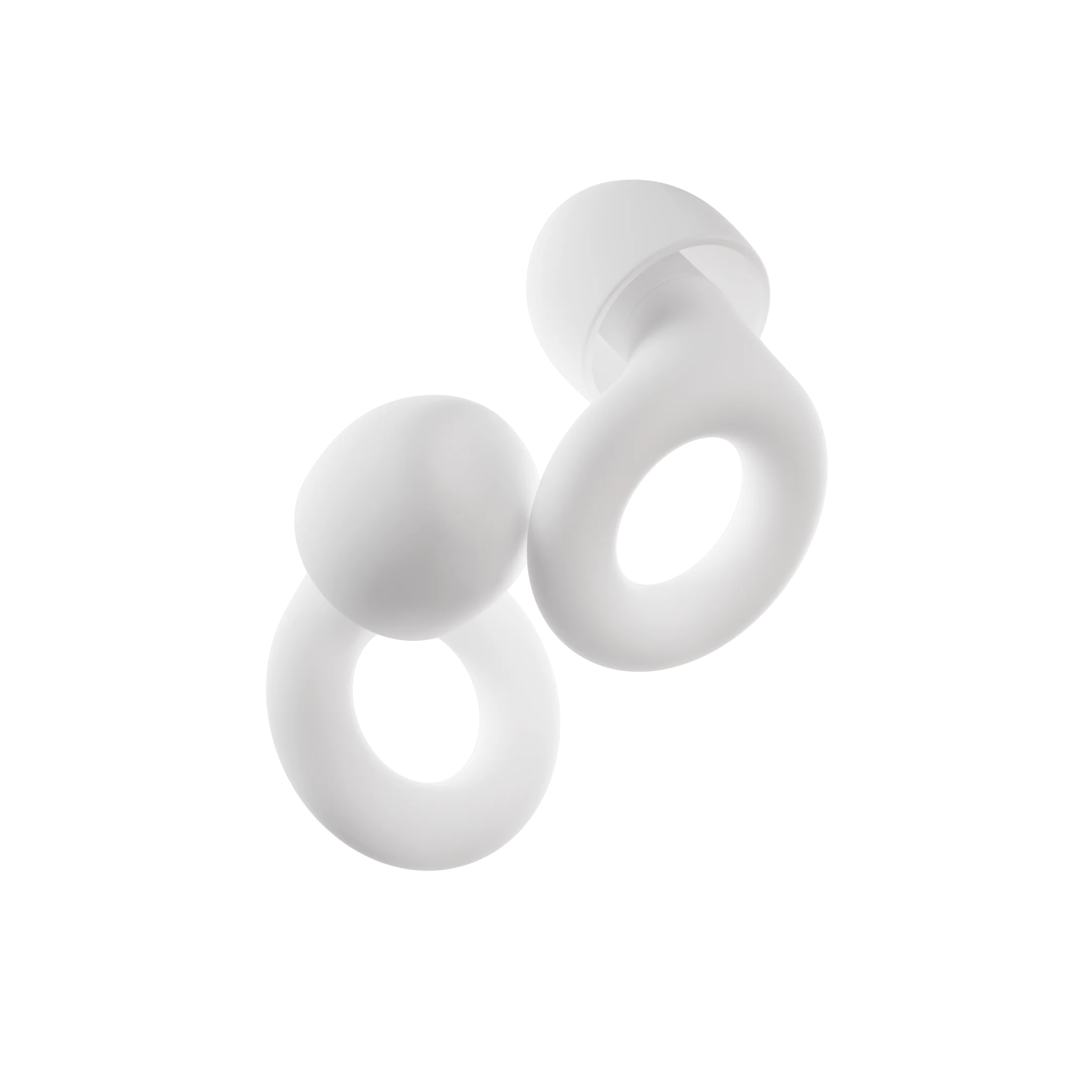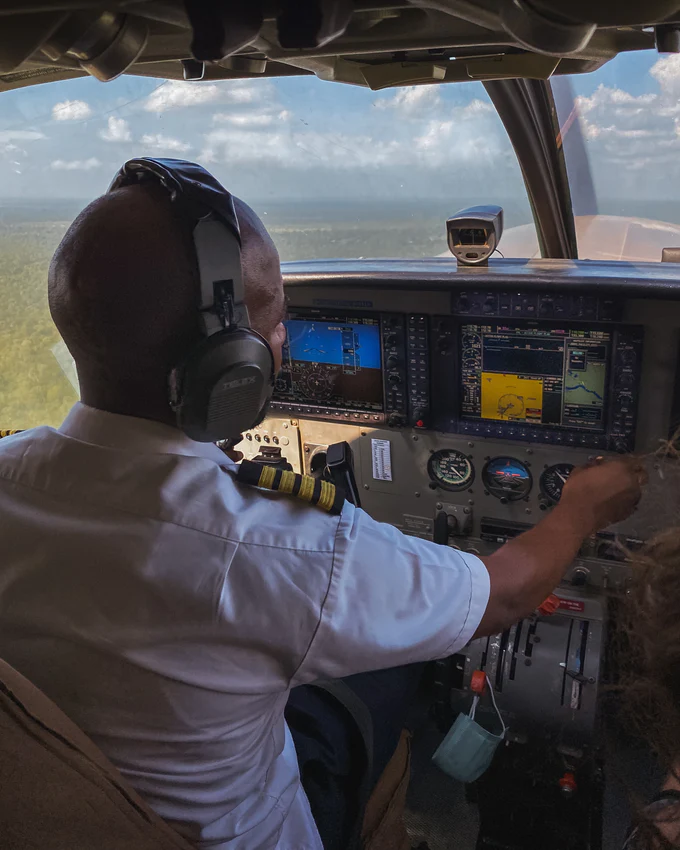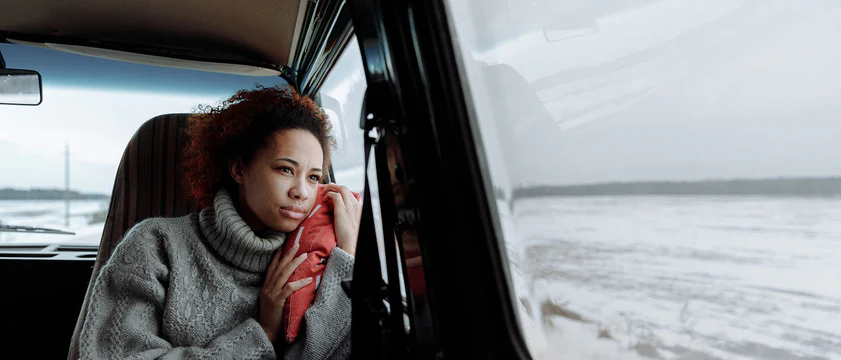Schütze deine Ohren beim Fliegen: Unsere Tipps für den ultimativen Schutz
Es gibt nichts Schöneres, als in einem Flugzeug zu fliegen.
In 36.000 Fuß Höhe zu kreuzen, ein neues Ziel vor Augen zu haben und das Land von oben zu betrachten.
Die meisten von uns werden im Laufe ihres Lebens irgendwann einmal fliegen müssen. Egal, ob du beruflich viel fliegst, regelmäßig deine Familie besuchst oder gerne mal einen Urlaub machst, Flugreisen sind ein wichtiger Teil der Welterfahrung.
Und wenn du inmitten all des Chaos und der Aufregung bist, vergisst du leicht eine wichtige Sache: die Pflege deiner Ohren.
Wenn du reist, sind sie wahrscheinlich das Letzte, woran du denkst. Aber wenn du Probleme bekommst, wirst du dir wünschen, du hättest dich besser um sie gekümmert.
Die Sache ist die: Flugzeuge sind laut. Außerdem befinden sie sich Tausende von Metern in der Luft, was deinen Ohren eine ganze Reihe von Problemen bereiten kann.
Deshalb ist es wichtig zu wissen, wie man sie pflegt.
In diesem Blogbeitrag werfen wir einen Blick auf die Ursachen von Ohrenschäden und -schmerzen, was den Ohren im Flugzeug hilft und wie du deine Ohren beim Fliegen schützen kannst.
Zunächst einmal: Was verursacht Ohrenschäden beim Fliegen?
Schauen wir uns das mal an.


Das Motorgeräusch ist lauter als du denkst
Kann Fliegen deine Ohren schädigen? Die Antwort ist ja.
Der Lärm der Triebwerke bei Start und Landung ist laut. Der Lärmpegel kann 105 Dezibel (dB) erreichen. Und wenn du bedenkst, dass 85 dB der Schwellenwert ist, ab dem dein Gehör auf Dauer geschädigt werden kann, solltest du das ernst nehmen.
Was möglicherweise noch überraschender ist, ist die Tatsache, dass der Geräuschpegel in der Luft immer noch bei etwa 85 dB liegt.
Stell dir vor: Der durchschnittliche Rasenmäher hat einen dB-Wert zwischen 80-85 dB. Es ist schwer, sich vorzustellen, dass man diesem Lärm stundenlang ausgesetzt ist. Aber wenn du fliegst, passiert genau das.
Wenn du dann noch den unvermeidlichen Kabinenlärm hinzurechnest, den du erleben wirst: Laute und aufgeregte Gruppen, das schreiende Baby neben dir, plötzliche Durchsagen, die dich abrupt wecken. Kein Wunder also, dass du deine Ohren während des Fluges schützen musst.
Ohren im Flugzeug: ein schmerzhaftes Problem
Du kennst es. Dieses schreckliche Druck-/Schmerzgefühl bei Start und Landung.
Es hat einen Namen und heißt Flugzeugohr (Ohr-Barotrauma). Es entsteht, wenn der Luftdruck in deinem Mittelohr und der Druck in der Umgebung nicht übereinstimmen, wodurch dein Trommelfell nicht normal vibrieren kann.
Es gibt einen schmalen Durchgang, die Eustachische Röhre, die für die Regulierung des Luftdrucks verantwortlich ist und mit deinem Mittelohr verbunden ist.
Wenn ein Flugzeug steigt oder landet, ändert sich der Luftdruck plötzlich und schnell. So schnell, dass die eustachische Röhre nicht schnell genug reagieren kann, was zu den Symptomen des Flugzeugohrs führt.
Leichte Symptome:
∞ Mäßige Schmerzen im Ohr
∞ Völlegefühl oder "Verstopfung" im Ohr
∞ Gedämpftes Hören
∞ Leichter bis mittlerer Hörverlust
Schwere Symptome:
∞ Starke Schmerzen
∞ Mäßiger bis starker Hörverlust
∞ Tinnitus (Klingeln im Ohr)
∞ Schwindel (ein Drehgefühl)
∞ Blutungen aus dem Ohr
Komplikationen
Die gute Nachricht ist, dass Flugzeugohren in der Regel nicht ernsthaft sind. Du brauchst nur selten ärztliche Hilfe und kannst es durch Vorbeugung und Selbstbehandlung behandeln.
Langfristige Komplikationen können vor allem dann auftreten, wenn das Ohr dauerhaft geschädigt ist oder wenn es über einen längeren Zeitraum lauten Geräuschpegeln ausgesetzt ist.
Seltene Komplikationen können sein:
∞ Dauerhafter Hörverlust
∞ Anhaltender (chronischer) Tinnitus
Wenn der Schaden an deinen Ohren einmal entstanden ist, ist er nicht mehr rückgängig zu machen, aber man kann ihm vorbeugen.
Hier erfährst du, wie du Ohrendruck beim Fliegen verhindern kannst:
Ohrstöpsel tragen
Die Leute fragen sich oft: Sollte man im Flugzeug Ohrstöpsel tragen?
Ja, das solltest du. Es ist nicht nur 100% sicher, sondern auch notwendig. Ohrenschäden entstehen, wenn deine Ohren über einen längeren Zeitraum Lärm von mehr als 70 dB oder mehr ausgesetzt sind. Wenn man bedenkt, dass Start und Landung bei 105 dB liegen und die Reisegeschwindigkeit bei 85 dB, können Ohrstöpsel beim Fliegen von unschätzbarem Wert sein, um dein Gehör zu schützen
Wir reden hier nicht von den gelben Wegwerfstöpseln, die du normalerweise auf einem Flug findest.
Investiere in Ohrstöpsel, die speziell entwickelt wurden, um deine Ohren optimal zu schützen.
Sie sorgen dafür, dass der Druck auf dein Trommelfell langsam ausgeglichen wird, wodurch die empfindlichen Teile des Ohrs geschützt werden.
Sie helfen auch dabei, unerwünschte Geräusche von anderen Passagieren auszublenden, wenn du dich einfach nur zurücklehnen und entspannen möchtest.

Loop Quiet 2
Loop Quiet Ohrstöpsel
Wähle deinen Sitzplatz mit Bedacht
Fakt ist: Im hinteren Teil des Flugzeugs ist es lauter. Das liegt vor allem an der Geräuschkulisse der Triebwerke und Propeller. Es ist gut zu wissen, dass es auch lauter ist, wenn du am Fenster sitzt, weil die Luft von draußen heranweht und du dich in der Nähe der Propeller befindest.
Suche dir einen ohrenfreundlichen Sitzplatz in der Mitte bis zum oberen Ende des Flugzeugs (am besten irgendwo vor den Flügeln) und irgendwo am Gang, damit du die besten Chancen auf einen angenehmen Flug hast.
Probiere Kopfhörer mit Geräuschunterdrückung aus
Wenn du dich mehr für Medien interessierst, sind Kopfhörer mit Geräuschunterdrückung eine gute Möglichkeit, deine Ohren zu schützen und gleichzeitig Musik zu hören. Sie funktionieren mit einem Mikrofon, das Geräusche erkennt, und einer Elektronik, die den Lärm um dich herum ausblendet.
Alles in bester Qualität, egal ob Musik, Video oder Hörbuch. Wenn du einen langen Flug vor dir hast, ist das die perfekte Art, dir die Zeit zu vertreiben.
Bekämpfe den Schmerz und das Ohrenknacken
Bekämpfe den Schmerz des Flugzeugohrs durch Gähnen, Schlucken oder Kauen. Die Idee ist, die Eustachische Röhre zu öffnen und den Druck im Inneren auszugleichen. Durch das Kauen von Lebensmitteln und Kaugummi, das Lutschen von Süßigkeiten und ständiges Gähnen kannst du die Symptome also stark lindern.


Hydratisieren. Und hydratisiere noch mehr
Trinke viel Flüssigkeit (leider keinen Alkohol). Das hilft nicht nur, deinen Flüssigkeitshaushalt aufrechtzuerhalten, sondern trägt auch zu deinem allgemeinen Wohlbefinden bei. In der Druckkabine gibt es weniger Sauerstoff als am Boden und du fühlst dich oft müde und dehydriert. Durch das Schlucken bleibt der Luftdruck in deinen Ohren auch gleich dem Luftdruck an der Außenseite.
Bleib bei Start und Landung wach
So verlockend es auch sein mag, vor dem Start einzuschlafen, vor allem, wenn du nach einem frühen/späten Start müde bist, warte, bis du in der Luft bist.
Wenn du schläfst, bist du nicht in der Lage, aktiv die Dinge zu tun, die du tun musst, um den Druck in deinen Ohren auszugleichen, wie zum Beispiel gähnen oder schlucken.
Sind manche Menschen einem größeren Risiko ausgesetzt?
Wenn du mit einer Vorerkrankung an Bord kommst, die die Eustachische Röhre blockiert, könntest du ein höheres Risiko für ein Flugzeugohr haben.
Diese Erkrankungen können sein:
∞ Heuschnupfen
∞ Erkältung
∞ Nasennebenhöhlenentzündung
∞ Mittelohrentzündung


Wie geht das Flugpersonal mit dem Druck auf die Ohren im Flugzeug um?
Mitarbeiter in der Luftfahrtindustrie sind einem hohen Risiko von Gehörschäden ausgesetzt.
Dein Flug dauert vielleicht nur ein paar Stunden, aber Piloten und Flugbegleiter müssen fast jeden Tag mit dem Lärm fertig werden.
Wenn man bedenkt, dass ein Düsentriebwerk 160 dB Lärm ausstoßen kann und 85 dB der gefährliche Grenzwert für eine längere hohe Belastung ist, ist es nicht verwunderlich, dass Piloten und Flugpersonal oft unter Gehörverlust, Tinnitus oder irgendeiner Form von Ohrschäden leiden
Für die Kommunikation tragen Piloten in der Regel ein Headset. Aber wenn sie das nicht tun, versuchen sie, die Ohren zu schützen, indem sie Ohrstöpsel tragen. Sie sind ideal, da sie unerwünschten Lärm herausfiltern und die Ohren schützen, während sie gleichzeitig alles hören können, was sie hören müssen.
Flugbegleiter/innen dürfen in der Regel keine Ohrstöpsel tragen, da sie die Passagiere nicht hören können. Das bedeutet aber nicht, dass sie ihre Ohren während der Landung und des Starts vernachlässigen. Sie können auch Pausen in der Nähe des vorderen Teils des Flugzeugs machen, wo der Lärm leiser ist.
Kinder und Ohrenschmerzen
Alle Eltern, die ein kleines Kind haben, fürchten sich vor dem Start und der Landung. Kinder haben eine kleine eustachische Röhre, was bedeutet, dass der Druck intensiver ist.
Um Kindern zu helfen:
∞ Ermutige sie zum Schlucken, indem du ihnen ihre Flasche oder ihren Schnuller gibst. Kinder, die älter als vier Jahre sind, können versuchen, durch einen Strohhalm zu trinken oder sogar Seifenblasen zu pusten.
∞Achte darauf, dass du abschwellende Mittel vermeidest - sie sind für kleine Kinder nicht geeignet.
Die wichtigsten Erkenntnisse
∞ Flugzeuge sind laut, und Flüge können mehr Schaden anrichten, als du vielleicht denkst. Bevor du fliegst, solltest du wissen, wie du deine Ohren am besten schützen kannst.
∞Flugzeugohren sind ein schmerzhaftes Problem, das bei Start und Landung auftritt. Es gibt Möglichkeiten, den Druck zu lindern und das Problem zu bekämpfen, z. B. durch Gähnen, Schlucken, Kauen oder das Tragen von Ohrstöpseln.
∞ Luftfahrtpersonal ist aufgrund der langen Exposition, der es ausgesetzt ist, einem höheren Risiko ausgesetzt. Dank der neuen Technologie von Ohrstöpseln wie Loop Experience können sie immer noch alles kristallklar hören, nur mit einem zusätzlichen Schutz.
∞ Kinder haben kleinere Ohrtrommeln und sind daher wahrscheinlich stärker betroffen. Fläschchen, Schnuller und Kaugummi (für die Älteren) helfen wahrscheinlich.

Worauf du bei lärmreduzierenden Ohrstöpseln achten solltest
Entdecke die Expertentipps für die Wahl der perfekten lärmreduzierenden Ohrstöpsel! Entdecke die wichtigsten Merkmale...

Was verursacht Fluglärm und wie man ihn vermeidet
Erfahre, was Ohrenschmerzen im Flugzeug verursacht und lerne Tipps zur Vorbeugung, um Beschwerden auf deinem nächste...

Top-Tipps für besseren Schlaf auf Reisen
Hast du Probleme, auf Reisen einzuschlafen? Mit diesen Tipps bekommst du den Schlaf, den du brauchst, wenn du unterwe...












